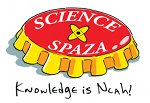These exciting developments in technology have drawbacks. One is that many jobs currently done by people may soon be done by machines – increasing unemployment. The ability to work in the future begins with where you are right now - at school! The key to employment in the future is lifelong learning. Here are some of the skills that will be in demand for the future:
- The ability to solve complicated problems
- Critical thinking people skills and people management
- Coordinating and multitasking
- The ability to make quick judgments and good decisions
- Emotional intelligence
- Having a sense of service
- Being able to negotiate and to think quickly out of the box and across multiple disciplines and fields.
It is clear that computers will be used more and more, so continue to develop your maths and science skills and take any opportunity you can to learn about how computers work so that you can be part of solving the complex problems of the future.
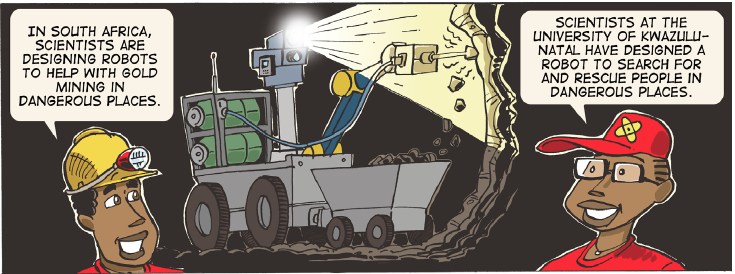
This content is supported by The Department of Science and Technology
Science Spaza collaborated with learners from Carnarvon Primary School, scientist from the SKA and popular music artist iFani. This exciting engagement was hosted by the South African Square Kilometre Array (SKA) all the way out in the Northern Cape during their Hip Hop Science Spaza experience earlier this year.


Mining is a dangerous job. One of the things that makes it dangerous is the ground falling in. Someone has to check that new tunnels and mines are safe to start working in - but this is dangerous for the people doing the checking! That is where the newly developed MONSTER robot is going to change things. Instead of sending people down to check the safety, the MONSTER will do it for them. Loose rocks have more air around them than rocks that are attached tightly to the wall. Because of this, the loose rocks will have a lower temperature. The MONSTER uses thermal imaging to find those rocks. Then to confirm that the rocks are really loose, it taps them!
Have you ever tapped on an empty and a full tin with your finger? They give a different sound. Well, the same principle applies when checking the rocks. A different sound is given off from a loose rock than one that is tightly packed into the wall. The MONSTER taps the rock and then “listens” to the sound given off. It can then confirm that the rock is loose and therefore it is an unsafe area to go into. Such innovations aim to make mining safer and more efficient. They are part of a collaboration called the ‘Mandela Mining Precinct’. The South African Minister of Science and Technology, Mmamoloko Kubayi-Ngubane launched the Mandela Mining Precinct in September 2018.
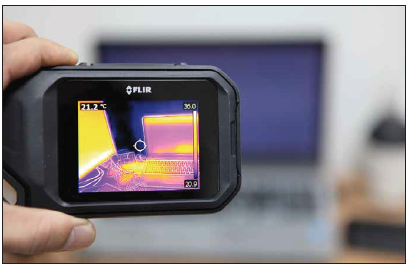
An infrared camera detects heat waves in a similar way to how your eyes detect light. So infrared cameras can “see” heat. Thermal imaging uses a computer to create a visible image from the invisible heat waves. pic: Pixabay/withplex
This content was produced in partnership with the Department of Science and Technology
Imagine a medical emergency in which a bone is broken so badly that it can’t be repaired. Scientists, engineers and medical experts at the Central University of Technology in Bloemfontein have developed a solution to deal with just this problem. First, using X-ray technology, the broken bone is 3D modeled – meaning that a computerised version of the bone is created. The shape of a “new bone” is designed on a computer to perfectly replace the broken pieces. Then, this new shape (or implant) is manufactured using advanced manufacture techniques. Surgeons can then remove the pieces of broken bone and replace them with an implant that fits perfectly – allowing the body to heal.
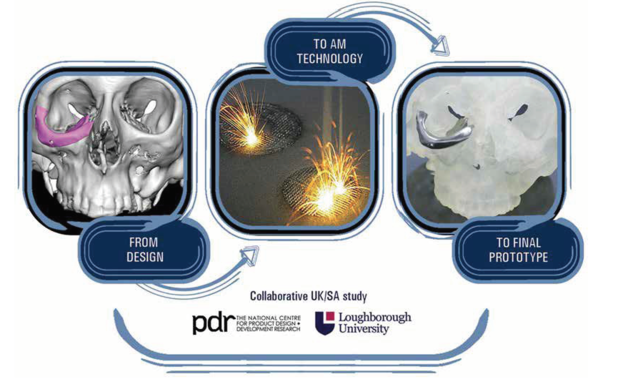
This content is produced in partnership with the Department of Science and Technology
How does science happen in universities and research labs? Mostly using computers. “How so?” you may ask. When scientists set up an experiment they usually take measurements.
In the past, these would have been recorded on paper – but these days, they are mostly taken by computers. These measurements give scientists the data of the experiment. Computers are instructed to carry out calculations on these measurements. Scientists use coding to tell computers how to do these calculations. With computers, scientists can take a lot more measurements and make many more calculations than they could by hand.
Computer programmes can also be used to predict what happens in an experiment using the laws of science. This is called a simulation or a model. This means that scientists can do ‘experiments’ using computers which can be safer, quicker and cheaper than doing the same experiment in the real world.
Computers can also be used to make images that help us make sense of data and gain new knowledge. Computers are used to make beautiful images from telescopes, for example. This is called data visualization. As scientific experiments get bigger and more complicated like the MeerKAT Radio Astronomy Telescope, scientists need more powerful, faster computers and more elaborate programmes to analyze the data. This is one of the ways that science drives the development of new technologies.
This article was written by The Inter-university Institute for Data Intensive Astronomy (IDIA) who exists to grow skills and expertise in data-intensive research.

Let's see if you can unscramble these words!
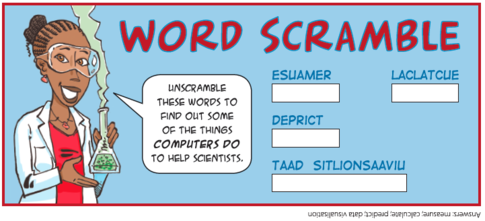
This content is produced in partnership with The Department of Science and Technology
